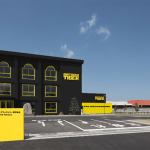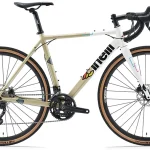In a good sign for consumer spending, customer satisfaction continued a slow and steady climb in the fourth quarter, according to the American Customer Satisfaction Index (ACSI).
During the fourth quarter, the ACSI measures customer satisfaction with the quality of products and services in retail, financial services, and e-commerce. The Index is up 0.4% over the previous quarter to an aggregate score of 73.5, but year over year it remains slightly below 2004. E-Commerce and Finance & Insurance rose, while the price of gas dragged down Retail Trade slightly.
The lead article in the January 2006 issue of Journal of Marketing demonstrated a direct link between ACSI scores and stock performance. Customer satisfaction scores also consistently show a correlation with sales growth.
“The ACSI's measure of satisfaction has historically led to repeat business and increased spending, and the new data suggest that consumer spending will rebound,” said Prof. Claes Fornell, director of the University of Michigan's National Quality Research Center, which compiles and analyzes the data. “But the negative savings rate suggests that consumers have been spending beyond their means, which may affect the degree to which spending will increase.”
Third quarter consumer spending was a dismal 1.1 percent, one of the slowest spending increases since 1990. But fourth quarter ACSI data suggest consumer spending should rebound and grow between 3.7 percent and 4 percent. Consumer spending represents nearly 70 percent of Gross Domestic Product.
Variation Among Major Retailers: Target Gains; Home Depot Falls
This year, the ACSI added health & personal care stores to the retail sector, which also includes the following industries: supermarkets, department & discount stores, specialty retail stores and gas stations. The overall retail sector had a slight decline to 72.4, a decrease of 0.3 percent, still well below its all-time high of 75.7 achieved in the first year of measurement in 1994.
In the department & discount stores industry, Home Depot posted the biggest decline among any company measured this quarter with an 8.2 percent drop to 67. Its major competitor Lowe's, on the other hand, gained 2.6 percent to 78 and now leads Home Depot by 14 percent. Lowe's and Home Depot both scored 75 when the Index first measured the companies in 2001. But since then, Home Depot has declined 10 percent, and Lowe's has gone up 4 percent. “Since 2001, Home Depot's stock has declined and Lowe's has gone up, mirroring the movement of their ACSI scores,” said Fornell.
The quality component is one of the most critical in ACSI, and Home Depot experienced the largest decline in perceived quality of any company measured in the fourth quarter. “Home Depot's state of the art quality techniques are more focused on internal systems for operational efficiency and productivity,” said Jack West, a past president of the American Society for Quality. “These things are largely transparent to the consumer and would take a while to be reflected in perceived quality ratings, if they're ever noticed by the consumer at all.”
Among major retailers, Kohl's Corporation continues to lead with a score of 80, up a point from last year. But the biggest positive mover is Target, which climbed 4 percent to 78. Consistent with its improved ACSI score, Target also posted strong sales in the fourth quarter, beating Wall Street expectations with a same-store gain of 4.7 percent. Costco rounded out the top scorers at 79, and also beat the Street with same-store sales growth of 7 percent. Wal-Mart (72) and Kmart (70) were again at the bottom of the ACSI's department & discount store category. Kmart improved 4.5 percent, showing that it is making moves to stay competitive. Lower scores correlated with more modest sales growth, with Wal-Mart's same-store sales up 2.2 percent and Kmart a 1 percent increase.
The health & personal care retail industry makes its debut at 76, highest of all the measured industries in the retail sector. High quality of service in the category leads to higher overall satisfaction, and the range within the category is fairly tight compared to the spread of scores in other industries. There is little variation between Walgreen's (76) at the top and Rite Aid (72) at the bottom, with CVS falling in the middle (74).
E-Commerce Scores Highest; Amazon Rebounds; eBay Holds Steady
The e-commerce sector climbs 1.3 percent to 79.6, still below its all-time high of 80.8 in 2003 but definitely on the rebound and maintaining its lead over the ACSI aggregate score and the offline retail sector. For the fourth year in a row, the online retail industry within the e-commerce sector continues to satisfy customers better than any other industry in the fourth quarter, moving up 1.3 percent to 81.
Online retail is doing a better job of satisfying customers than offline retail. E-retail customer satisfaction is almost 12 percent higher than the overall retail industry. “Online retail is figuring out ways to compensate for being a virtual experience by providing a lot more information than you'd be able to find in-store,” said Larry Freed, online satisfaction expert and president and CEO of ForeSee Results. “Many online stores offer extensive product information, side by side specification comparisons, customer reviews and 360 degree views, all from the convenience of your computer.”
Amazon made up most of the ground it lost last year, up 3.6 percent to 87. Amazon is tied with BarnesandNoble.com for the highest score of any retailer or service provider in the ACSI. Although customer satisfaction improved, Amazon's profits fell in the fourth quarter, partly due to investments in customer benefits like new technology and free shipping.
The online auction industry improved 1.3 percent to its all-time high score of 78. After a year in which it saw a steep decline, industry leader eBay improved to 81, well above any other company in the category but still below its 2003 peak of 84. eBay's ACSI drop in 2004 correlated with its stock price, which lost almost half of its market value in the first half of 2005.
The industry score for travel web sites like Expedia (79), Travelocity (75) and Orbitz (74) improved by 1 percent to 79. A year ago, the big three were within a point of each other. In 2005, Expedia pulled away with an ability to differentiate itself with new products such as cruises and packages from popular resorts.
Banks Steady; Big Drops for Prudential MetLife and Farmer's Group
In the finance and insurance sectors, healthcare insurance (68) and property insurance (78) are up 1.5 percent and 1.3 percent respectively, while banks and life insurance hold steady at 75.
Retail banking matched its all-time high of 75 with Wachovia solidifying its lead at 79, a 1 percent increase over last year. The life insurance category holds steady, though Prudential (72) and MetLife (71) took sharp drops of 6.5 percent and 7.8 percent, respectively.
“A decline in service and increase in premiums are pretty sure to make customers upset,” said Claes Fornell about Prudential and MetLife's falling ACSI scores.
Most of the property & casualty insurance category held steady, but Farmers Group suffered a big drop of 5.2 percent, falling to 73, or about 6 percent below the category score.
The ACSI is produced by the University of Michigan Ross School of Business, in partnership with the American Society for Quality and CFI Group, and supported in part by ForeSee Results, e-commerce co-sponsor.















